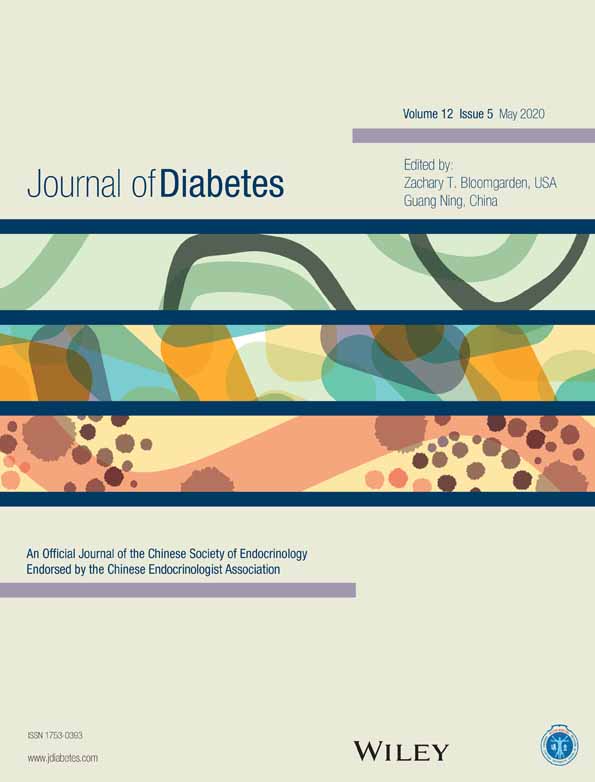Antidiabetic drug use trends in patients with type 2 diabetes mellitus and chronic kidney disease: A cross-sectional analysis of the National Health and Nutrition Examination Survey
2型糖尿病合并慢性肾病患者抗糖尿病药物使用趋势:国家健康与营养调查的横断面分析
Abstract
enBackground
There is little information on medication use, trends across time, and the impact of guidelines on appropriate use of antidiabetic drugs in participants with type 2 diabetes mellitus (T2DM) with chronic kidney disease (CKD).
Methods
A cross-sectional analysis of the National Health and Nutrition Examination Survey (NHANES) from 2005-2016 was carried out for participants with T2DM with and without CKD. Multivariate survey-weighted regression models were used to evaluate trends in antidiabetic drug use across the time periods and CKD severity. Guideline-discordant use of metformin and glyburide were assessed among those with glomerular filtration rate and serum creatinine-based contraindications.
Results
Out of 3237 study participants with T2DM, 35.9% had CKD. Comparing 2013-2016 with 2005-2008, use of metformin (non-CKD: 69% vs 83.8%, CKD: 58.6% vs 68.2%) increased, whereas the use of sulfonylureas (non-CKD: 46.3% vs 27.2%, CKD: 54.7% vs 36.6%) and thiazolidinediones (non-CKD: 29.3% vs 3.9%, CKD: 24.6% vs 5.5%) decreased. In combined NHANES cycles and across stages of CKD severity, metformin use decreased (non-CKD, stage 1/2, stage 3, stage 4/5: 78.4%, 69.5%, 54.6%, 4.9%, respectively; P < .01), and insulin use increased (18.5%, 26.8%, 25%, 52.8%, respectively; P < .01) from non-CKD to progressed CKD. Guideline-discordant use of metformin and glyburide was observed in 8.3% and 2.8% of the participants, respectively, in 2013-2016.
Conclusions
Use of particular antidiabetic medications in patients with CKD changed noticeably over the years, most in accordance with guidelines and regulatory decisions. Gaps in quality of care still exist, which warrants increasing awareness and implementing programs to mitigate inappropriate use.
摘要
zh背景
很少有信息研究关于2型糖尿病(T2DM)合并慢性肾脏病(CKD)患者的用药情况、趋势以及指南对合理使用抗糖尿病药物的影响。
方法
对2005-2016年全国健康与营养检查调查(NHANES)中合并和不合并慢性肾脏病的2型糖尿病患者进行横断面分析。以多变量加权回归模型评估抗糖尿病药物在不同时间段和不同CKD严重程度上的使用趋势。在有基于肾小球滤过率和血清肌酐禁忌症的患者中, 评估二甲双胍和格列本脲的使用与指南不一致的情况。
结果
在3237名患有T2DM的参与者中, 35.9%患有CKD。2013-2016年与2005-2008年相比, 二甲双胍的使用量增加(非CKD:69% vs 83.8%, CKD:58.6% vs 68.2%), 而磺脲类药物(非CKD:46.3% vs 27.2%, CKD:54.7% vs 36.6%)和噻唑烷二酮类药物(非CKD:29.3% vs 3.9%, CKD:24.6% vs 5.5%)的使用减少。在NHANES联合周期和跨CKD严重程度分期中, 从非CKD到进展CKD, 二甲双胍使用量减少(非CKD、1或2期、3期、4或5期分别为78.4%、69.5%、54.6%、4.9%;P<0.01), 胰岛素使用量增加(分别为18.5%、26.8%、25%、52.8%;P<0.01)。2013-2016年间, 分别有8.3%和2.8%的参与者观察中到二甲双胍和格列本脲的使用与指南不一致。
结论
CKD患者特殊抗糖尿病药物的使用在过去几年中发生了明显的变化, 大多数都符合指南和管理的推荐。但治疗质量方面仍然存在差距, 这需要提高认识并实施措施, 以减少不适当的使用。
CONFLICT OF INTERESTS
None of the authors have any conflict of interest to disclose.




